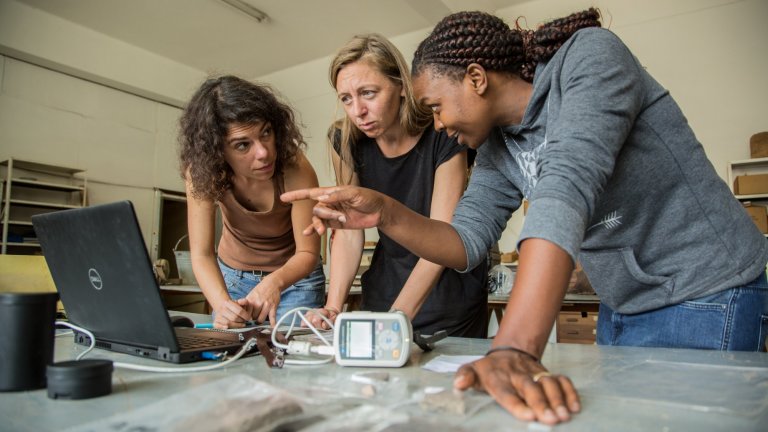
© Nicolas Baker / Traces / ARSCAN / CNRS Photothèque
View the mediaScientific news
With its multi-year co-operation plan with Africa, CNRS intends to consolidate and expand collaboration with all countries on the continent in a joint and mutually rewarding approach.

© Nicolas Baker / Traces / ARSCAN / CNRS Photothèque
View the mediaFor a long time, CNRS has been a preferred partner of laboratories and scientific programmes in African countries. For the 2010-2019 period, it has been the leading non-African co-publication partner for African countries. It should be said that Africa, which currently has a modest place in global scientific output (2.4% of scientists and 4% of publications globally) “will be a major actor in science in future years”, as anticipated by Antoine Petit, the Chairman-CEO of CNRS. And the figures prove this: over the last decade, its scientific output has increased by 2.3 (as opposed to 1.3 for the rest of the world), and many countries are investing heavily in research and development there.
This is why CNRS launched a call for proposals with its researchers in late 2020 to develop solid, sustainable and equitable partnerships with African countries. The purpose is to develop collaboration with African countries through a multi-year plan with a joint and mutually rewarding approach.
There is no doubt that this co-operation will see the emergence of ambitious scientific programmes that will benefit not only Africa, but also the rest of the world. However, it should contribute even more to revealing the wonders of a continent whose history, fauna, flora and future challenges are so abundant that we will still need centuries to grasp its vastness.
We invite you today to discover a small overview of the research that has been conducted in recent years in very diverse disciplines.
Our work is guided by the way scientists question the world around them and we translate their research into images to help people to understand the world better and to awaken their curiosity and wonderment.